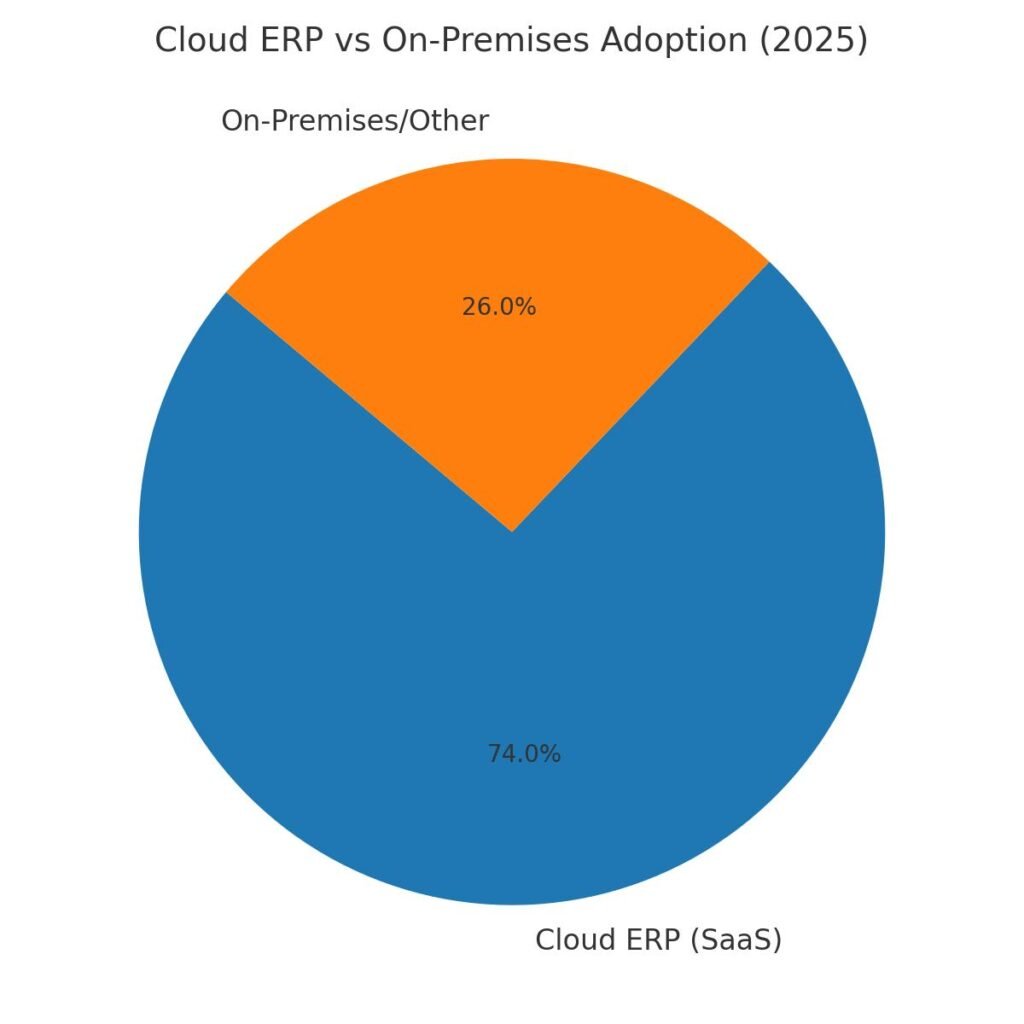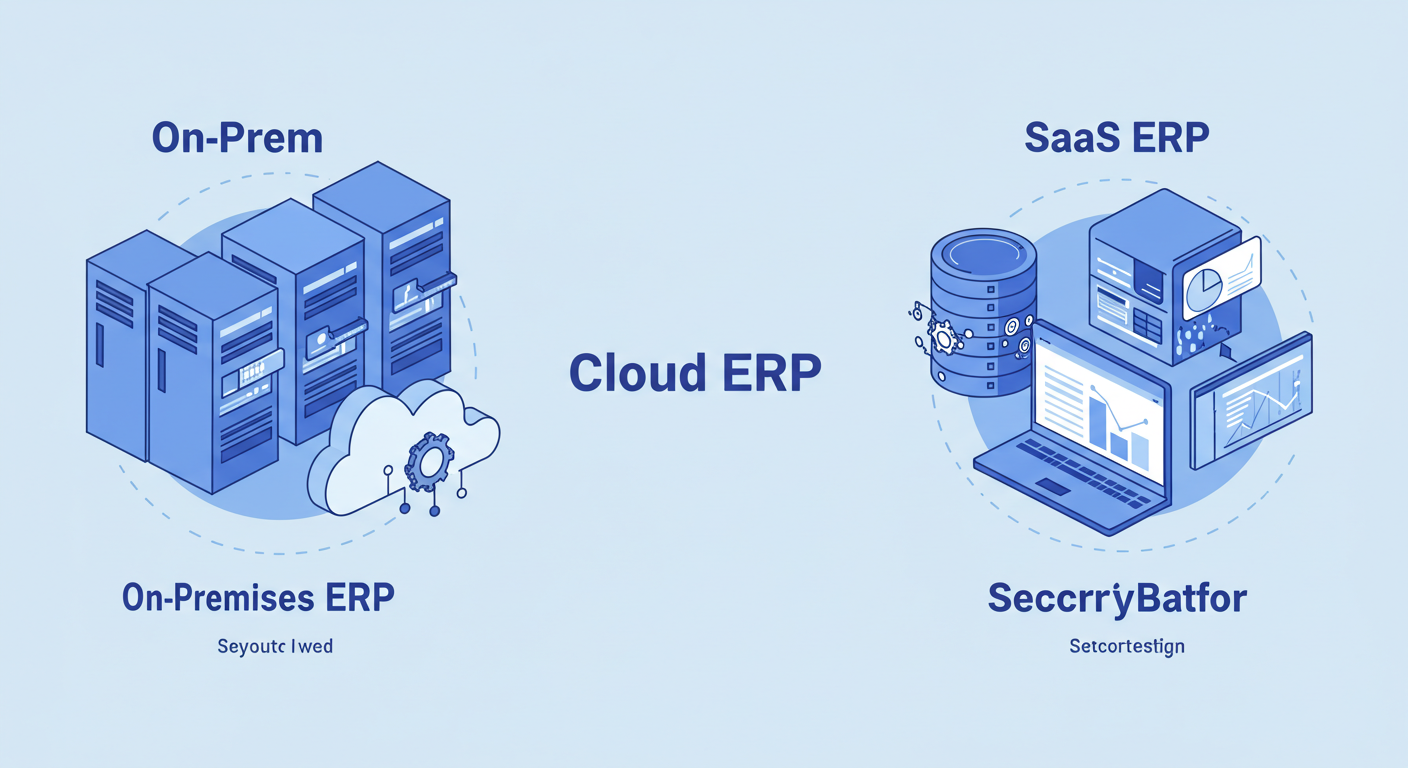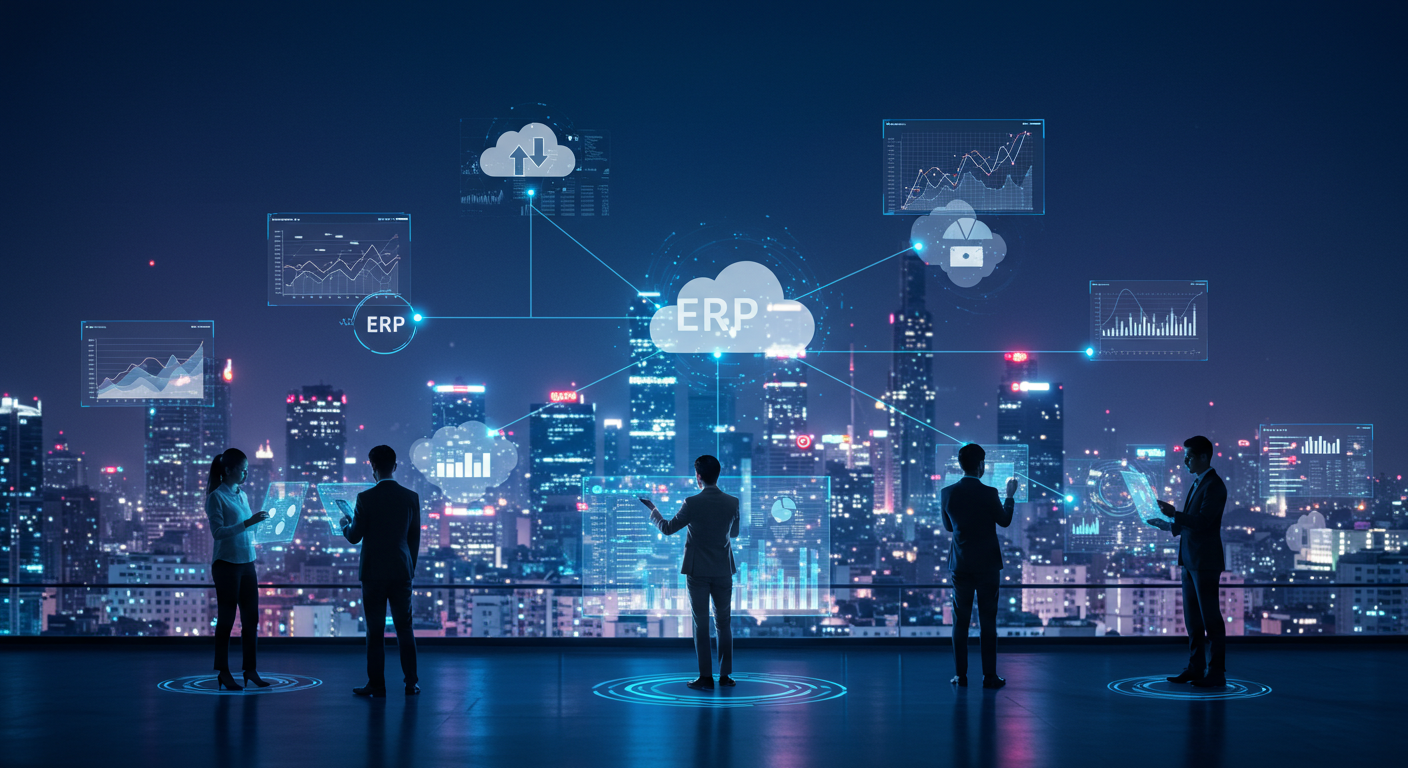In today’s digital and fast-growing digital economy era, the maximum number of businesses are rapidly adopting cloud-based ERP SaaS solution systems to streamline operations, reduce IT (Information Technology) costs, and make scalability easier.
Opposite to traditional on-premises ERP software, which requires heavy infrastructure and constant upgrades, SaaS ERP is hosted in the vendor’s cloud and delivered via the internet—giving companies real-time access to enterprise tools anytime, anywhere.

According to the IDC SaaSPath Survey, nearly 74% of ERP customers now prefer integrated cloud ERP suites. This preference comes because these systems eliminate complex maintenance while improving flexibility, scalability, and cost-efficiency. Industry reports such as the RFgen ERP Guide and Deltek ERP Overview further highlight how cloud ERP is reshaping enterprises globally.
This fast adoption trend clearly shows that in 2025 and beyond, cloud ERP is becoming the core of business transformation for both SMEs and large enterprises.
What is a Cloud-Based ERP SaaS Solution System?
ERP (Enterprise Resource Planning)
ERP (Enterprise Resource Planning) is an integrated business management software that connects finance, HR, supply chain, and operations on a single platform. It automates processes, improves accuracy, and provides real-time insights—enhancing decision-making and speeding up operations.
👉 Read more on Oracle ERP Overview

SaaS (Software as a Service)
SaaS (Software as a Service) is a cloud delivery model where the software is hosted on the vendor’s servers (e.g., AWS, Azure, Oracle Cloud). Users access it via the internet, while maintenance, security, and upgrades are handled by the vendor—making it cost-efficient and hassle-free.
👉 Learn more on Salesforce SaaS Model
On-Premises vs Cloud vs SaaS ERP
| Model | Hosting Location | Cost & Maintenance | Scalability | Updates |
|---|---|---|---|---|
| On-Premises ERP | Company’s own servers | High cost, heavy maintenance | Low | Manual |
| Cloud ERP | Vendor’s data center | Moderate, vendor-managed | High | Partial |
| SaaS ERP | Vendor’s cloud (as-a-service) | Subscription-based, low hassle | Very High | Automatic |
Why Businesses Need Cloud ERP SaaS in 2025
In the new and advanced year 2025, businesses are adopting cloud-based ERP SaaS solution systems very rapidly because it is a cost-efficient, scalable, and future-ready option. IT (Information Technology) costs can be reduced, and the scalability phase becomes easier.
Opposite to traditional on-premises ERP software, where heavy infrastructure and constant upgrades along with additional working are required, SaaS ERP is hosted in the vendor’s cloud and delivered through the internet—giving companies real-time access to enterprise tools anytime, anywhere.
👉 According to Gartner Research, by 2025 more than 70% of businesses will shift to cloud ERP systems because of cost efficiency and agility.
Chart: Why Businesses Prefer Cloud ERP SaaS (2025)
| Factor | On-Premises ERP ❌ | Cloud ERP SaaS ✅ |
|---|---|---|
| Upfront Cost | High | Low (subscription-based) |
| Scalability | Limited | High (grow as business grows) |
| Maintenance | In-house IT team | Vendor managed |
| Accessibility | Office only | Anytime, Anywhere |
| Updates & Upgrades | Manual, costly | Automatic |
| Security & Compliance | Business handled | Vendor handled with global standards |
Types of Cloud ERP SaaS Solutions
In today’s modern time, businesses are adopting cloud-based ERP SaaS solution systems very rapidly and, according to their needs or requirements, choose different deployment models. Each type has its own impact on cost, security, and scalability.
👉 According to IDC MarketScape research, businesses increasingly choose flexible ERP SaaS models to balance security, compliance, and scalability in 2025.
Chart: Types of Cloud ERP SaaS Deployment Models
| Deployment Model | Key Features | Pros ✅ | Cons ❌ |
|---|---|---|---|
| Multi-Tenant SaaS ERP | Multiple businesses share one instance & infrastructure, vendor manages upgrades | Cost-effective, Easy-to-use | Limited customization |
| Single-Tenant SaaS ERP | Dedicated instance per business | More control & customization | More expensive |
| Public Cloud ERP | Hosted on AWS, Azure, Oracle Cloud | Scalable & affordable | Security/Compliance concerns |
| Private Cloud ERP | Dedicated environment (on-prem or third-party) | Maximum security & control | Higher cost |
| Hybrid ERP SaaS | Mix of private & public cloud (sensitive data in private) | Balance of cost & security, good for gradual migration |
SaaS ERP vs On-Premises ERP vs Hosted ERP: Which is Best for Your Business?
Choosing an ERP system has nowadays become a strategic and thought-provoking decision. Every model such as SaaS ERP, On-Premises ERP, and Hosted ERP has its own pros & cons.
👉 According to Gartner’s ERP Trends 2025 Report, over 65% of enterprises are shifting towards cloud SaaS ERP models, mainly due to lower IT costs, scalability, and faster deployments compared to traditional ERP models.
Comparison Table: SaaS ERP vs On-Premises ERP vs Hosted ERP
| Feature | SaaS ERP (Cloud-based) | On-Premises ERP | Hosted ERP (Private Cloud) |
|---|---|---|---|
| Hosting | Vendor’s cloud servers, accessed via internet | Installed on company’s own servers | Third-party hosts system on dedicated servers |
| Cost Structure | Subscription-based (monthly/annual) | High upfront license + hardware cost | Mix of upfront + recurring hosting fees |
| Accessibility | Anywhere, any device (high mobility) | Limited to company network unless VPN setup | Remote access possible, depends on provider |
| Scalability | Easy to scale up/down instantly | Complex & costly to scale | Moderate scalability, depends on hosting contract |
| Implementation | Fast (weeks to months) | Slow (months to years) | Moderate (depends on migration) |
| Maintenance | Vendor handles updates, patches & security | In-house IT team responsible | Hosting provider manages infra, some updates by company |
| Customization | Limited (standardized modules) | High flexibility & deep customization | Moderate (some vendor restrictions apply) |
| Security | Vendor-managed security & compliance | Full control, but costly to maintain | Shared responsibility (company + host) |
| Best Use Case | SMBs & growing businesses needing quick deployment & lower IT costs | Large enterprises with strict compliance & heavy customization needs | Companies needing private cloud control without on-premises infrastructure |
Conclusion
In today’s fast-changing business environment, adopting cloud-based ERP SaaS solution systems has not only become an option but also a necessity. These systems provide cost efficiency, scalability, and real-time accessibility — a game-changer for businesses of every size.
Final CTA:
“Whether you are an SME or an enterprise, the right SaaS ERP can completely transform your operations in 2025.”
